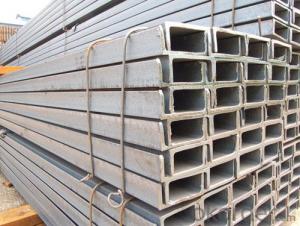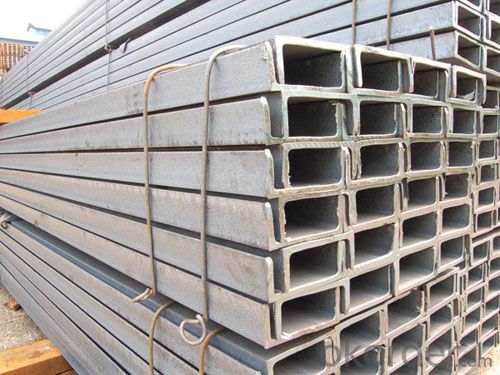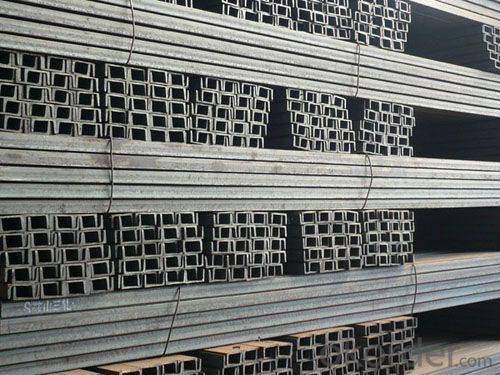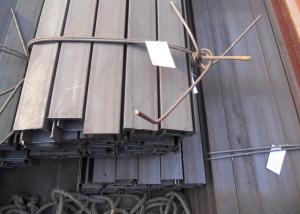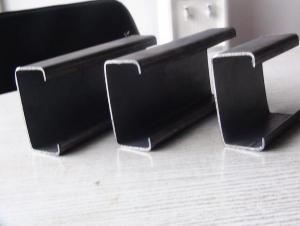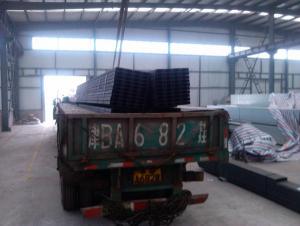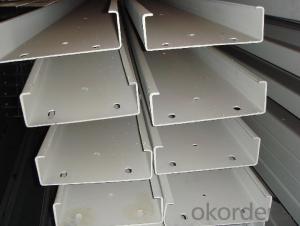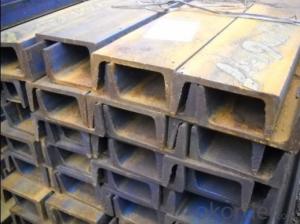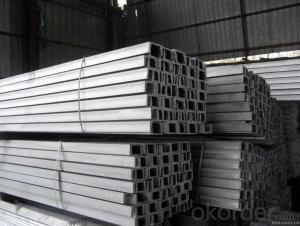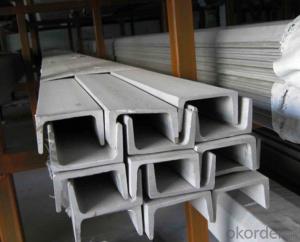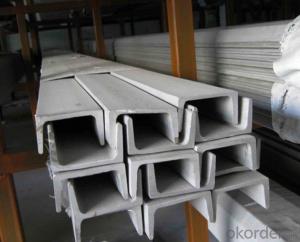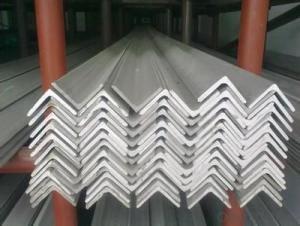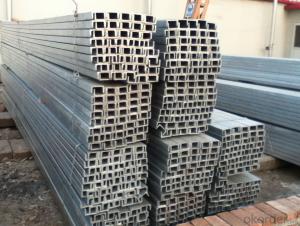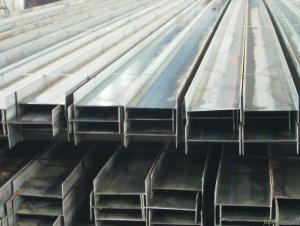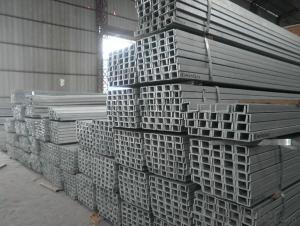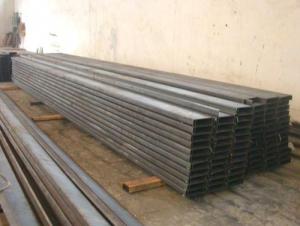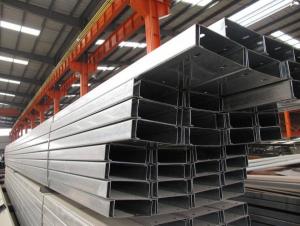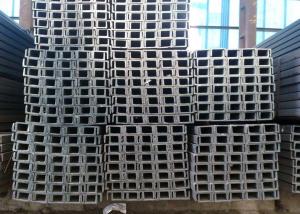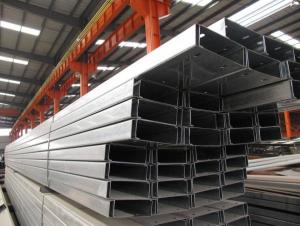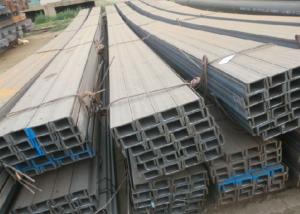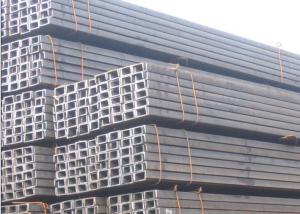JIS U Channel Or GB U Channel 50-300MM Or UPN
- Loading Port:
- Tianjin
- Payment Terms:
- TT OR LC
- Min Order Qty:
- 25 m.t.
- Supply Capability:
- 100000000 m.t./month
OKorder Service Pledge
OKorder Financial Service
You Might Also Like
Product Description:
OKorder is offering high quality JIS U Channel Or GB U Channel 50-300MM Or UPN at great prices with worldwide shipping. Our supplier is a world-class manufacturer of steel, with our products utilized the world over. OKorder annually supplies products to European, North American and Asian markets. We provide quotations within 24 hours of receiving an inquiry and guarantee competitive prices.
Product Applications:
According to the needs of different structures, Angle can compose to different force support component, and also can be the connections between components. It is widely used in various building structures and engineering structures such as roof beams, bridges, transmission towers, hoisting machinery and transport machinery, ships, industrial furnaces, reaction tower, container frame and warehouse etc
Product Advantages:
OKorder's JIS U Channel Or GB U Channel 50-300MM Or UPN are durable, strong, and resist corrosion.
Main Product Features:
· Premium quality
· Prompt delivery & seaworthy packing (30 days after receiving deposit)
· Corrosion resistance
· Can be recycled and reused
· Mill test certification
· Professional Service
· Competitive pricing
Product Specifications:
Manufacture: Hot rolled
Grade: Q195 – 235
Certificates: ISO, SGS, BV, CIQ
Length: 6m – 12m, as per customer request
Packaging: Export packing, nude packing, bundled
Sizes: 25mm-250mm | ||||||||||
a*t | ||||||||||
25*2.5-4.0 | 70*6.0-9.0 | 130*9.0-15 | ||||||||
30*2.5-6.6 | 75*6.0-9.0 | 140*10-14 | ||||||||
36*3.0-5.0 | 80*5.0-10 | 150*10-20 | ||||||||
38*2.3-6.0 | 90*7.0-10 | 160*10-16 | ||||||||
40*3.0-5.0 | 100*6.0-12 | 175*12-15 | ||||||||
45*4.0-6.0 | 110*8.0-10 | 180*12-18 | ||||||||
50*4.0-6.0 | 120*6.0-15 | 200*14-25 | ||||||||
60*4.0-8.0 | 125*8.0-14 | 250*25 | ||||||||
FAQ:
Q1: Why buy Materials & Equipment from OKorder.com?
A1: All products offered byOKorder.com are carefully selected from China's most reliable manufacturing enterprises. Through its ISO certifications, OKorder.com adheres to the highest standards and a commitment to supply chain safety and customer satisfaction.
Q2: How do we guarantee the quality of our products?
A2: We have established an advanced quality management system which conducts strict quality tests at every step, from raw materials to the final product. At the same time, we provide extensive follow-up service assurances as required.
Q3: How soon can we receive the product after purchase?
A3: Within three days of placing an order, we will begin production. The specific shipping date is dependent upon international and government factors, but is typically 7 to 10 workdays.
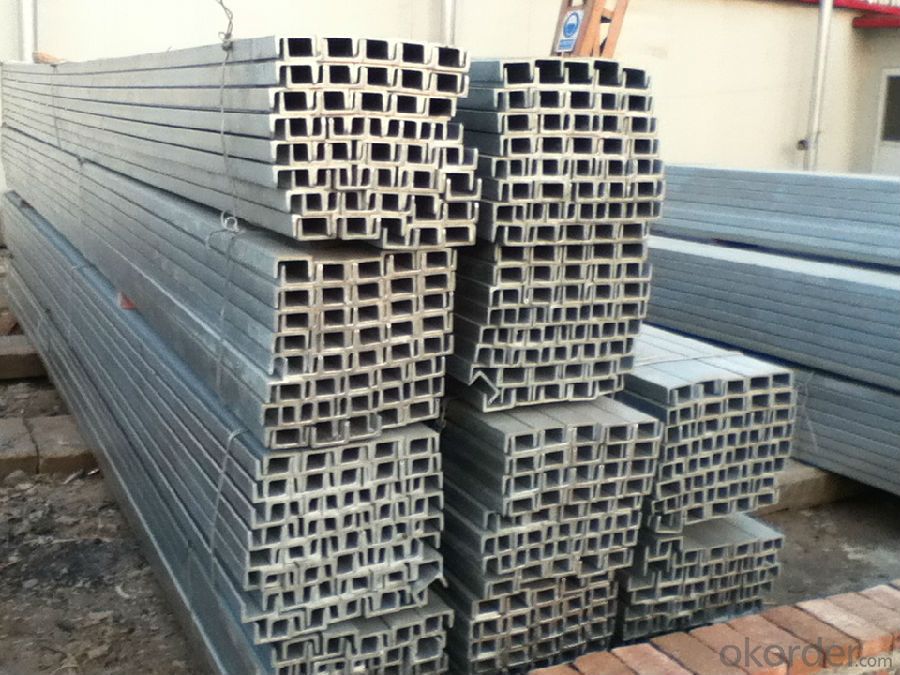
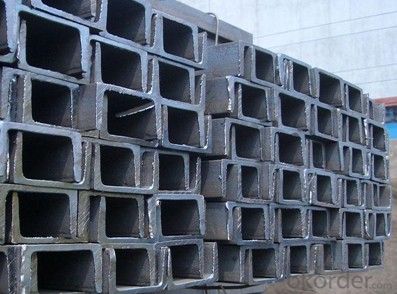
- Q: How do steel channels contribute to the overall stability of a structure?
- Steel channels contribute to the overall stability of a structure by providing structural support and reinforcement. They are often used as beams or columns, distributing the load and transferring it to the foundation or other supporting elements. Their shape and material properties enhance their strength and stiffness, allowing them to withstand bending, torsion, and other forces that can cause structural instability. Additionally, steel channels can be strategically placed to resist lateral movements and vibrations, ensuring the stability and integrity of the entire structure.
- Q: What are the different jointing methods for steel channels?
- Different jointing methods can be utilized for steel channels based on the specific application and requirements. Here are a few common methods: 1. Welding: Steel channels can be joined by melting the adjoining surfaces and fusing them together using heat. Welding is a widely used method that creates a permanent and robust joint. However, it demands skilled labor and proper equipment. 2. Bolting: Another popular method involves securing the channels together using bolts, nuts, and washers. Bolting provides a flexible joint that allows for disassembly if needed. Nonetheless, it may not offer the same strength as welding, particularly in dynamic or high-stress conditions. 3. Riveting: This method entails using rivets to connect the steel channels. Rivets are inserted through pre-drilled holes and deformed to hold them in place. Riveting can produce a durable joint, but it necessitates specialized equipment and skilled labor. 4. Adhesive bonding: Adhesive bonding involves the use of specialized adhesives or bonding agents to join the channels. It can create a strong and lightweight joint, but it may not be suitable for environments with high temperatures or moisture. 5. Interlocking: Certain steel channels are designed with interlocking features, eliminating the need for additional fasteners or adhesives. This method is commonly used in prefabricated structures or modular systems that require quick and easy assembly. When selecting the appropriate jointing method, it is crucial to consider factors such as load requirements, environmental conditions, and ease of assembly. Consulting with structural engineers or industry professionals can help determine the most suitable method for a specific application.
- Q: What type of channel is used for the type of room with a span of 4 meters?
- By experience, use 14# i-beam.
- Q: Can steel channels be used for creating support structures for electrical systems?
- Yes, steel channels can be used for creating support structures for electrical systems. Steel channels are often used in construction and engineering projects because of their strength, durability, and versatility. They provide a solid and stable framework that can support the weight of electrical components and systems. Additionally, steel channels can be easily fabricated and customized to meet specific design requirements, making them ideal for creating support structures for electrical systems.
- Q: How do steel channels contribute to building durability?
- Steel channels contribute to building durability in several ways. Firstly, they provide structural support and reinforcement to the building, enhancing its overall strength and resistance to external forces such as wind, earthquakes, or heavy loads. Additionally, steel channels are highly durable themselves, as they are made from high-quality steel that is resistant to corrosion, decay, and pests. This ensures that the channels maintain their structural integrity over time, contributing to the long-term durability of the building. Lastly, steel channels also facilitate the installation and integration of various building systems, such as electrical, plumbing, or HVAC, further enhancing the overall efficiency and durability of the building.
- Q: Are steel channels resistant to pests and rodents?
- Yes, steel channels are resistant to pests and rodents. The material is not susceptible to damage or infestation from common pests and rodents, making it an effective choice for preventing such issues.
- Q: What are the different fabrication methods for steel channels?
- Some of the different fabrication methods for steel channels include hot rolling, cold rolling, extrusion, and welding.
- Q: How are steel channels measured?
- Steel channels are typically measured using two key dimensions: the height and the width. The height refers to the vertical measurement from the top to the bottom of the channel, while the width refers to the horizontal measurement from one side to the other. These dimensions are important as they determine the size and shape of the channel, which in turn affects its strength and load-bearing capacity. Additionally, the thickness of the steel used to make the channel is also considered when measuring it. This measurement is usually given in gauge or millimeters and represents the thickness of the steel walls of the channel. By knowing the height, width, and thickness, one can determine the overall dimensions and characteristics of a steel channel, enabling it to be used effectively in various construction and manufacturing applications.
- Q: What is the cost of steel channels?
- The cost of steel channels can vary depending on various factors such as the size, grade, and quantity required. It is best to contact a steel supplier or manufacturer for a specific quote based on your requirements.
- Q: Can steel channels be used for stair stringers in commercial buildings?
- Yes, steel channels can be used for stair stringers in commercial buildings. Steel channels are commonly used in construction due to their strength and durability. They provide excellent support and stability for staircases, making them suitable for commercial buildings where heavy foot traffic is expected. Additionally, steel channels can be customized to meet specific design requirements, allowing for flexibility in the construction of stair stringers.
Send your message to us
JIS U Channel Or GB U Channel 50-300MM Or UPN
- Loading Port:
- Tianjin
- Payment Terms:
- TT OR LC
- Min Order Qty:
- 25 m.t.
- Supply Capability:
- 100000000 m.t./month
OKorder Service Pledge
OKorder Financial Service
Similar products
Hot products
Hot Searches
Related keywords
